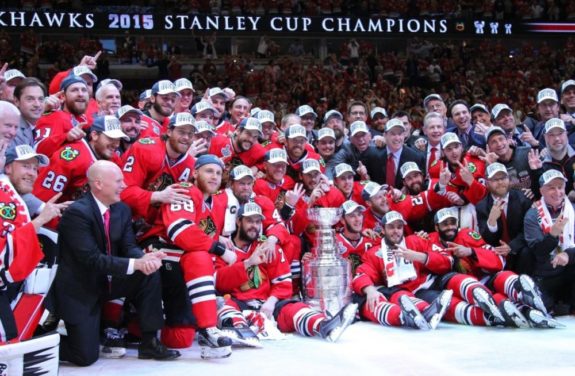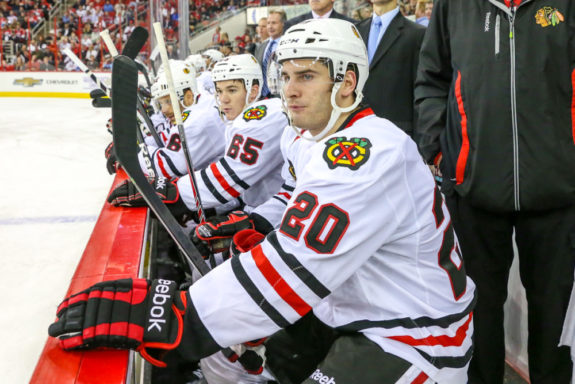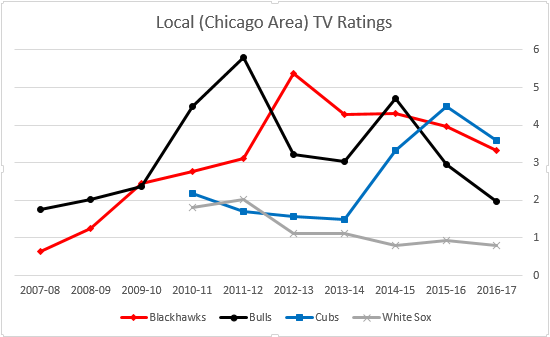Make no mistake about it: Chicago is a Bears town. It has been for as long as I can remember.
What about baseball? Sure, fans across the city have their allegiances. But they’re divided. Interest weighs towards the Cubs given the franchise’s recent and unprecedented success. The White Sox maintain their core fan base and, having assembled one of the best group of prospects in baseball, may be on the rise.
And during the winter months? Chicago sports fans generally split their attention, with many leaning towards the Blackhawks. Others take an interest in the Bulls, the Blackhawks’ co-tenant at 1901 West Madison Street. Some find the time to actively follow both.
But, as Chicagoans will attest, nothing brings the town to life like the Bears heading into the playoffs. Therein lies the problem, the Bears and the NFL playoffs could not be farther apart. Elsewhere in Chicago, the Bulls are having what could be a historically bad season, the White Sox are finishing an irrelevant 2017 campaign and the Cubs, with a chance to have another incredibly successful season, can’t conceivably match the fervor of the record- and curse-breaking 2016 championship.

With three franchises in the midst of a rebuild and the Cubs season nearing an end, the Blackhawks should now take center stage for most Chicago sports fans as they embark on their 2017-18 season.
Bear With Me
Despite missing the postseason for the last six years (and nine of the last 10), fans of the NFL’s charter franchise have been resilient. But, with a 0-2 start to the 2017 season and some clear deficiencies, it’s fair to wonder if Chicago will remain interested in a team headed for a last-place finish in the NFC North Division for the fourth straight year.
Matt Barkley's turnover for a Vikings' TD a fitting end to brutal Bears season https://t.co/DkPg6bJs2f via @danwiederer pic.twitter.com/Fw97PRd9tf
— Chicago Tribune Sports (@ChicagoSports) January 2, 2017
Are Bears fans discouraged, or worse, apathetic? Look no further than the attendance at Soldier Field for their season opener against the Atlanta Falcons. The Bears distributed (i.e. sold) 61,857 tickets, technically a sellout of the stadium’s 61,500-person seating capacity. How many were actually in attendance? 56,990, or 93% capacity.
With the third smallest stadium in the NFL, behind the Oakland-Alameda County Coliseum and StubHub Center (MLS stadium and temporary home of the Los Angeles Chargers), it’s shocking that the team residing in the third largest metropolitan area in the United States (by population) could not muster a full crowd on opening day.
Local television ratings draw a similar conclusion. According to the Chicago Tribune, the Bears’ 2017 season opener against the Falcons generated a local rating of 20.8 on FOX-32. That is down 7% from the 22.4 local rating for the 2016 season opener against the Houston Texans.
According to Crain’s Chicago Business, the majority of the Bears’ local TV ratings for the 2016 season ranged between 19 and 21, a far cry from the 27.5 to 31.5 average rating range from 2011 through 2014. Bears fans are still tuning in, but not like they once did. If the team continues their disappointing trajectory, will more fans tune out? Better yet, will those fans tuning out redirect their interest to another Chicago sports team or disengage altogether?
Everyone Loves a Winner
It’s human nature to jump on the bandwagon. People want to win. People want to be successful. Years of losing will test even the most loyal fan base. It’s why the Blackhawks were once an afterthought and it’s also why I think they will be the preeminent Chicago sports team over the next year.
What about the Bulls? It’s hard to imagine they’ll command much attention from Chicago fans outside of their core fan base. Unless you like mediocre basketball and a rebuilding franchise under the guidance of a much-maligned front office, there’s little about the Bulls to convince the average fan to tune in.
The frustration with the Bulls' front office has reached a new public level. This is on the corner of Racine and Lake. Via @adamnaiem95 pic.twitter.com/ZEhsKQP1u7
— Nick Friedell (@NickFriedell) July 19, 2017
The White Sox season has been over since early summer. The Cubs will draw a good amount of fan interest, particularly if they clinch their third consecutive postseason berth, something the franchise has accomplished only one other time (1906-08). But, even in the best-case scenario, their season will be over by early November. After that, where will Chicago fans turn? If you’re looking for a competitive team, the Blackhawks might be the only option.
Familiar Faces
Besides the expectation that the Blackhawks should put forth another competitive season, there’s another reason for fans to get excited. The return of Patrick Sharp and Brandon Saad.

While the loss of players like Artemi Panarin and Niklas Hjalmarsson during the offseason rubbed some fans the wrong way, the return of Sharp and Saad should make up for those losses, especially from a casual fan’s perspective.
Sharp was and is a household name. Fans that were cultivated over the last decade of success didn’t know what a Blackhawks team looked like without Sharp, prior to his 2015 trade to the Stars. Like Duncan Keith and Brent Seabrook, he had been with the team during its entire modern-day rise to popularity.
Sharp is also one of the more charismatic members of the team. Upon signing his one-year deal to rejoin the Blackhawks, he was heard over the Chicago airwaves commenting on how elated he was to be back with the organization and to be bringing his family back to Chicago. Accessibility and personable qualities off the ice can build and enhance fan interest.

Saad was the one that got away. Now, he’s back. He was without a doubt the Blackhawks’ best young player prior to being traded to the Columbus Blue Jackets. He plays a brand of hockey that is endearing to fans: Strong, gritty, skilled; not a ton of flash but a ton of production. He embodies the blue-collar style that emulates his hometown of Pittsburgh and much of the Chicago fan base. They will be rooting for him.
The Numbers Don’t Lie
If you’re still not convinced the Blackhawks have a golden opportunity to re-establish themselves as Chicago’s preeminent team, let’s consider local TV ratings. The chart below gives a decent indication of local audience patterns for four of Chicago’s five major professional sports franchises.

These figures were all sourced from Crain’s Chicago Business and represent games viewed on Comcast SportsNet (CSN) Chicago. Complete data for Bears local TV ratings was not available and are therefore excluded from the chart (limited ratings data was discussed earlier in this article). The Cubs and White Sox data align with the second year in each of the Blackhawks and Bulls seasons (i.e. 2017 Cubs ratings are compared to 2016-17 Blackhawks data). The 2017 Cubs and White Sox ratings were reflective of games played to-date (42 and 57 games respectively).
According to the graph, the Blackhawks have garnered the most consistent local audience over the last four seasons. Excluding the Bears, they drew the largest audience during the 2012-13 and 2013-14 seasons and were nearly the top draw in each of the last three seasons. With the Bulls’ poor performance driving away viewers and the Cubs coming off last season’s high, the Blackhawks are perfectly positioned to once again be CSN’s top draw.
And, while I’m not insinuating the Blackhawks and the NHL will come close to drawing a stronger audience than the Bears and the NFL, the gap is closing. Combine that with non-rating factors such as the Blackhawks’ 414-game sellout streak (including regular season and postseason; as of April 5th, 2017) and intangible qualities such as fan optimism, Chicago’s sports community should be focused squarely on the Blackhawks by the time the calendar turns to November.